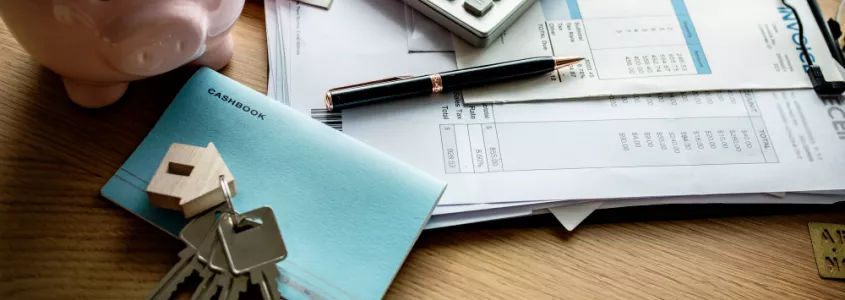
Table of contents
A divorce or separation is a turning point for anyone. After all, it is not just a matter of ending cohabitation with your partner and each going your separate ways, but also involves making difficult decisions and dealing with a multitude of issues. One of these is what to do with the family home. That is why we want to explain what happens and what options you have if you are facing divorce with children and a mortgaged home.
In a divorce, who gets to keep the mortgaged house?
Before answering this question, you need to be very clear about one thing: ownership and use of a home are not the same thing. In fact, these are legal concepts with very different effects, so we will address them separately.
La propiedad de la vivienda hipotecada
Neither separation nor divorce alters the ownership of the home on its own. This means that if it was acquired after marriage under the community property regime or if it is jointly owned (50-50% is most common, but the percentages may vary), it will belong to both members of the couple.
At this point, there are several options. The most common, given the current property market situation, is to keep the family home where the children will grow up, whether under sole or joint custody. The agreement on its use will be reflected in the divorce settlement agreement.
However, the former spouses may also choose to liquidate the property, for which they have several alternatives:
- Sell the property to a third party: with the money obtained, they pay off the mortgage with the bank and divide the surplus (if any) between the parties according to the percentage each had in the property.
- Award to one of the spouses: one of the members of the couple buys the other's share of the home in exchange for financial compensation, assumption of the entire mortgage, or both.
Use of the family home
The problem is that when former spouses do not have any second homes other than the family home, the priority of judges in divorce cases will always be the interests of minor children. Therefore, in such cases, there is virtually no possibility of sale until the children reach the age of majority.
In cases of sole custody, use of the family home will be attributed to the parent who has custody. However, if custody is shared, there are more options. For example, it can be attributed to one of the parents for a limited time or established as a nesting home. This means that the children will always remain in the house, but their parents will rotate on a weekly or monthly basis.
Who pays the mortgage in the event of divorce with children?
Many people mistakenly believe that, once separation or divorce occurs, the obligation to pay the mortgage falls on the partner who will use the family home. However, this is not the case.
The mere fact that there is a separation with children and a mortgage (or without children involved) does not alter the conditions of the loan that was taken out in the past to purchase the home. In addition, financial institutions consider all contractors to be “joint debtors”.
But what does it mean that both members of the couple are joint debtors if they did not both sign the mortgage? Basically, it means that both have to pay 50% of the instalments. And if one cannot do so, the other has to answer for them. What is more, the bank can claim the entire monthly payments from either of the two ex-spouses, regardless of what was agreed in the divorce settlement or court ruling.
Imagine a couple who divorce and the woman retains custody of the children and use of the family home, which is owned equally by both. If she loses her job at a certain point, he will have to assume 100% of the mortgage payments. Conversely, if he loses his source of income, she will have to take over. If neither of them does, the bank can take action, including repossessing the house.
Novation: an interesting solution
Novation is an agreement whereby the bank that granted the mortgage loan to the couple agrees to change the terms of the contract so that only one of the partners assumes full payment of the debt. Therefore, one of them is exempt from their payment obligations, which become the responsibility of the other in their entirety, without the need to modify the terms of the loan.
For this option to be viable, not only must the couple agree, either by carrying out the novation as is or by agreeing on additional financial compensation. In addition, the bank is free to accept or reject the proposal. Its response will depend on the financial capacity of the person who wants to assume the entire debt.
For example, if the ex-spouse who wants to execute the novation and take on 100% of the mortgage is a civil servant, the bank will probably have no problem with this. On the other hand, if they are self-employed with an unstable business, it is very likely that the bank will refuse.
What happens if one of the two former spouses does not pay their share of the instalment?
As we have already made clear, both parties are jointly and severally liable for the mortgage loan and, therefore, the other spouse will have to assume the payment. However, the latter may claim the money, either during the liquidation of the joint property or by means of a claim for payment, if the non-payment occurs some time after the divorce has been finalised.
In any case, the process of divorce with children and a mortgaged property is complex in legal terms. Therefore, if you still have any doubts, we recommend that you contact our lawyers who are experts in divorce. They will help you with everything you need.

"Anywhere in Spain"
With our online appointment system you will have immediate advice without the need for face-to-face visits or travel.
One of our lawyers specialized in your area of interest will contact you to formalize an appointment and make your consultation by video call.

Add new comment